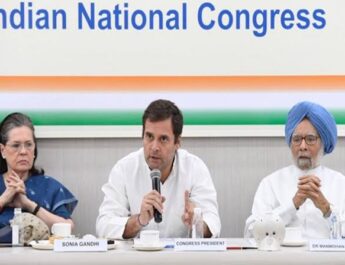NEW DELHI: he water level of the Yamuna in Delhi breached the danger mark again on Wednesday morning, less than 12 hours after it dropped below the threshold, amid rains in the national capital and the upper reaches of the river.
The Central Water Commission’s data showed the water level reached 205.48 metres at 8 am. It is expected to rise to 205.72 metres by 6 pm.
The flow rate at the Hathnikund barrage saw a marginal rise on Tuesday afternoon, oscillating between 50,000 and 60,000 cusecs. It dropped to around 39,000 cusecs by 7 am on Wednesday. One cusec is equivalent to 28.32 litres per second.
The India Meteorological Department has warned of heavy to very heavy rain at isolated places in Uttarakhand and Himachal Pradesh until July 22 and moderate showers in Delhi on Wednesday.
The water level in the river had dropped below the danger mark of 205.33 metres by 8 pm on Tuesday, after flowing above the threshold for eight days. It receded to 205.22 metres at 5 am on Wednesday before it started rising again.
The increase in the water level could slow down the rehabilitation of affected families in the inundated low-lying areas of the capital and they may have to stay longer in relief camps. It could also impact the water supply, which became normal only on Tuesday after being affected for four to five days due to the inundation of a pump house at Wazirabad.
The pump house supplies raw water to Wazirabad, Chandrawal, and Okhla water treatment plants, which together account for around 25 per cent of the city’s supply.
The Okhla water treatment plant began operating on Friday, Chandrawal on Sunday and Wazirabad on Tuesday.
On Tuesday evening, a Delhi Jal Board (DJB) official said, “There is a shortage of only 10-12 million gallons of water per day (MGD) due to inundation of some tube wels in the river floodplains at Palla.”
The DJB extracts around 30 MGD from tubewells installed in the Palla floodplains. The river had been receding gradually after reaching an all-time high of 208.66 metres on Thursday. It saw a marginal increase in the water level on Monday before it started dropping again.
Parts of the city have been grappling with waterlogging and flooding issues for over a week now. Initially, a downpour caused intense waterlogging on July 8 and 9, with the city receiving 125 per cent of its monthly rainfall quota in just two days.
The consequences of the floods have been devastating, with over 27,000 people evacuated from their homes. The losses incurred in terms of property, businesses, and earnings have amounted to crores.
Experts attribute the unprecedented flooding in Delhi to encroachment on floodplains, extreme rainfall occurring within shorter durations, and silt accumulation that raised the riverbed.
A study on “Urban Flooding and its Management” by the Irrigation and Flood Control Department identifies east Delhi under the floodplain region and highly vulnerable to floods. Despite this, encroachment and development have occurred at a rapid pace in the ecologically sensitive region over the years.
###




